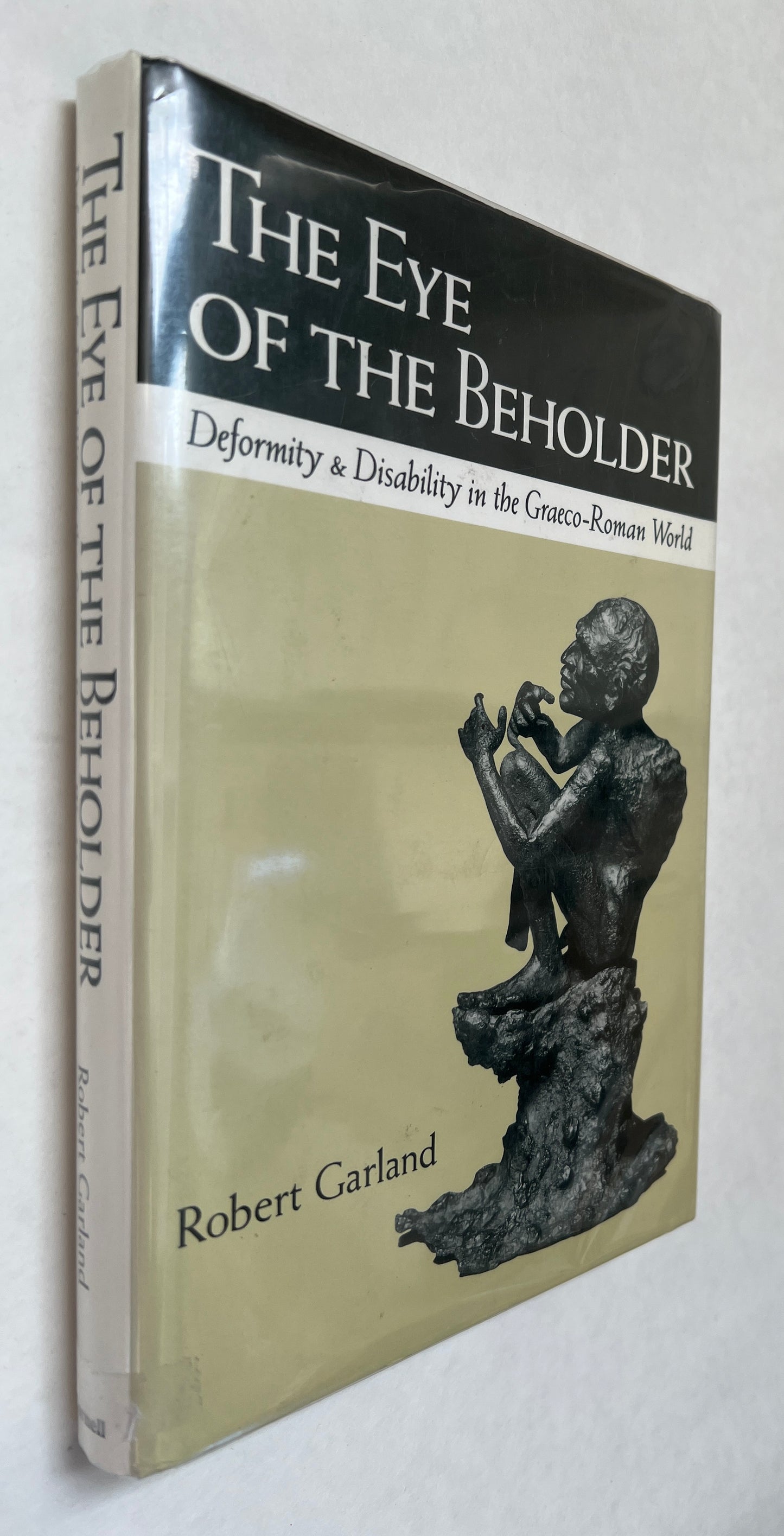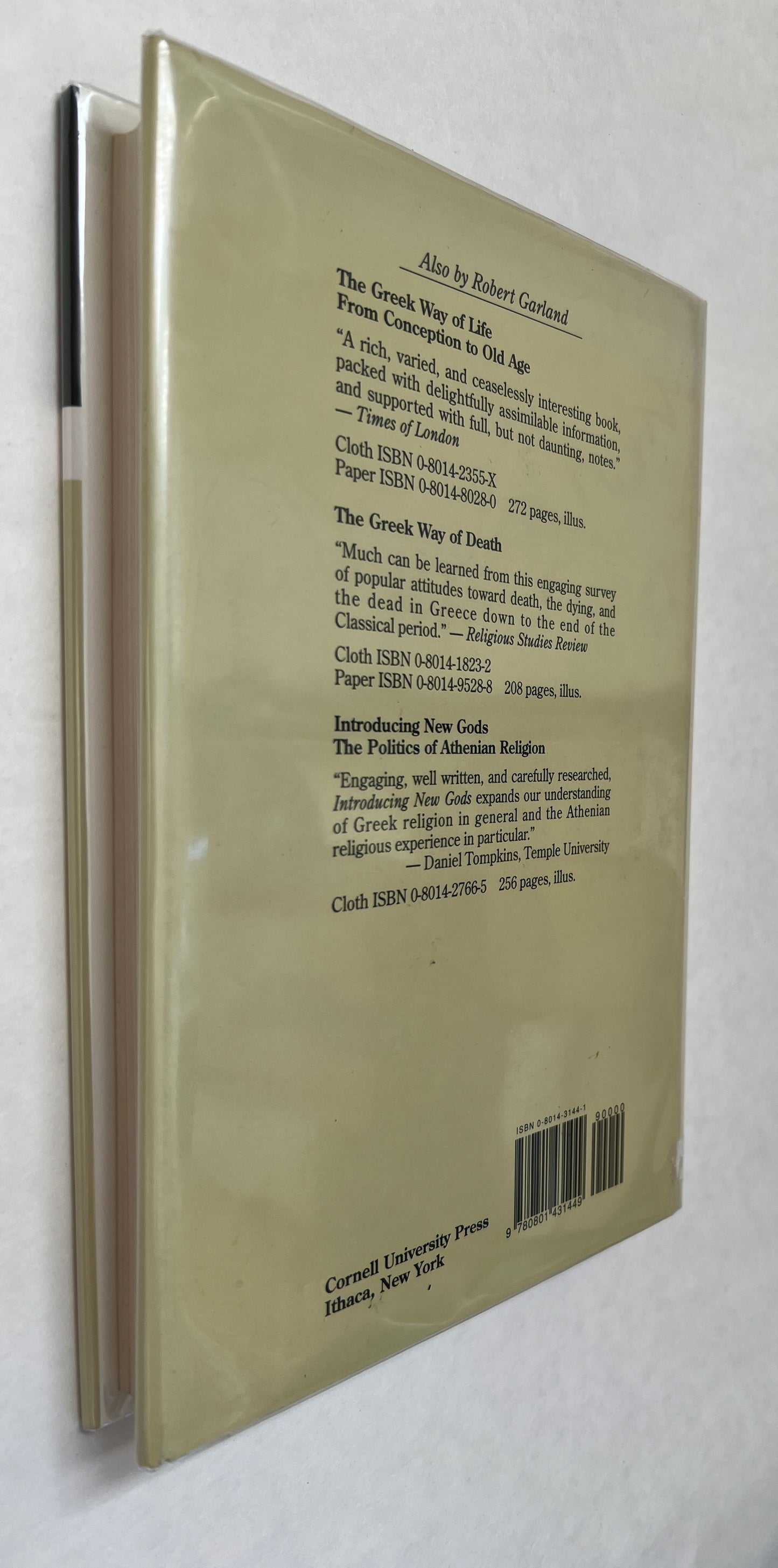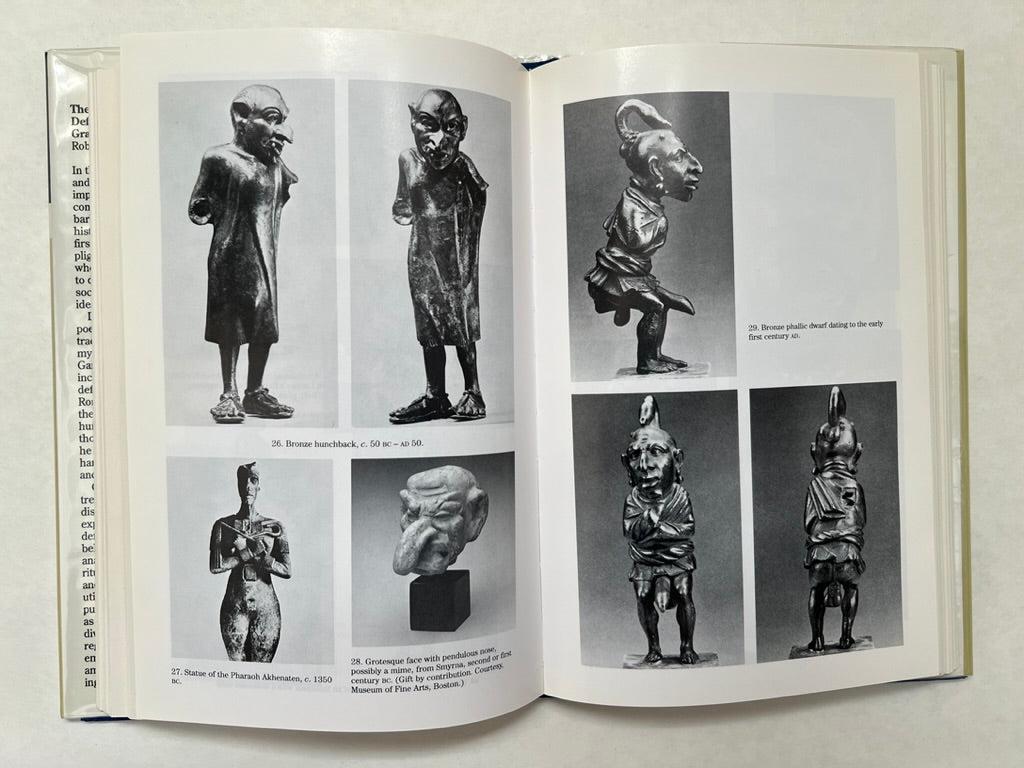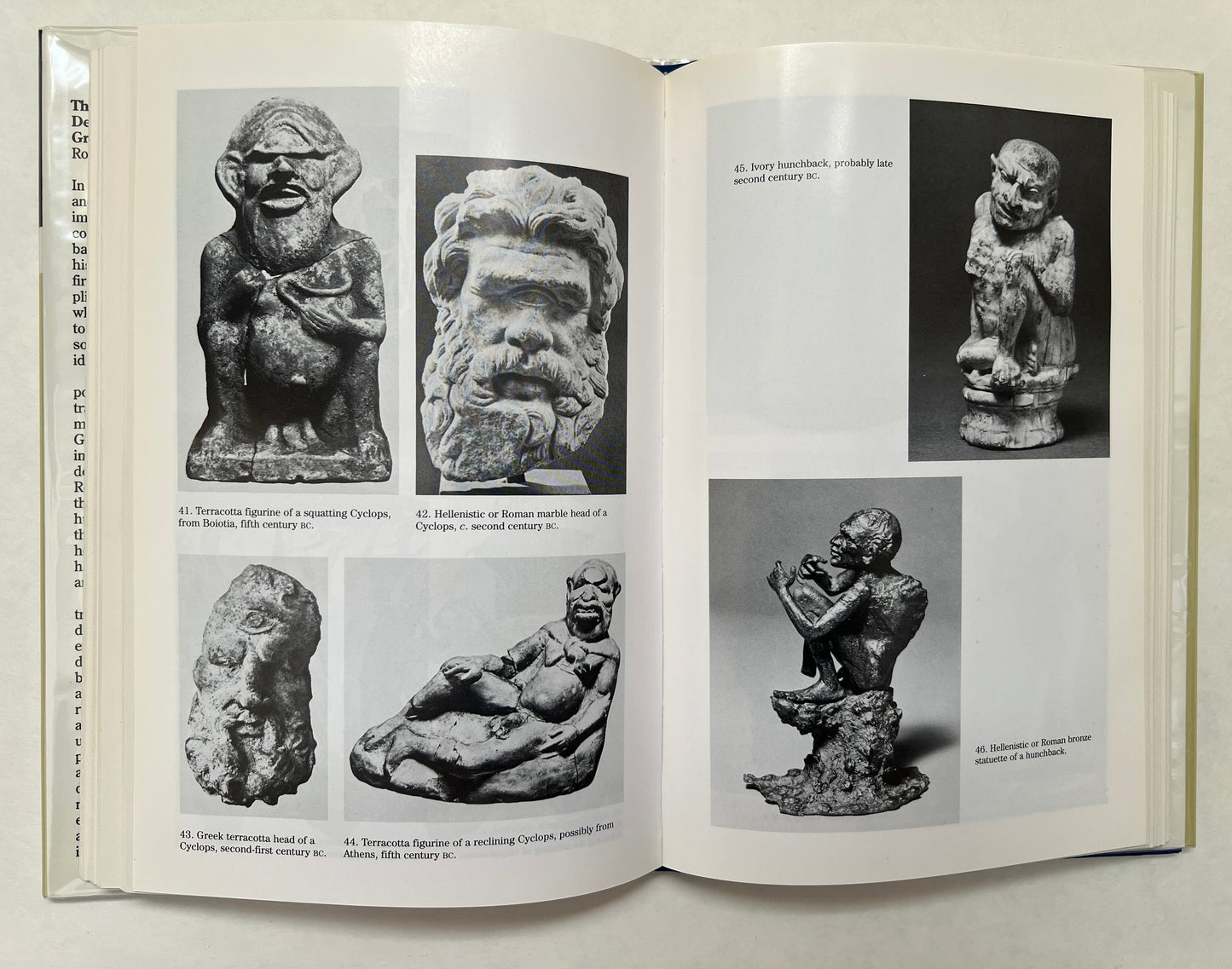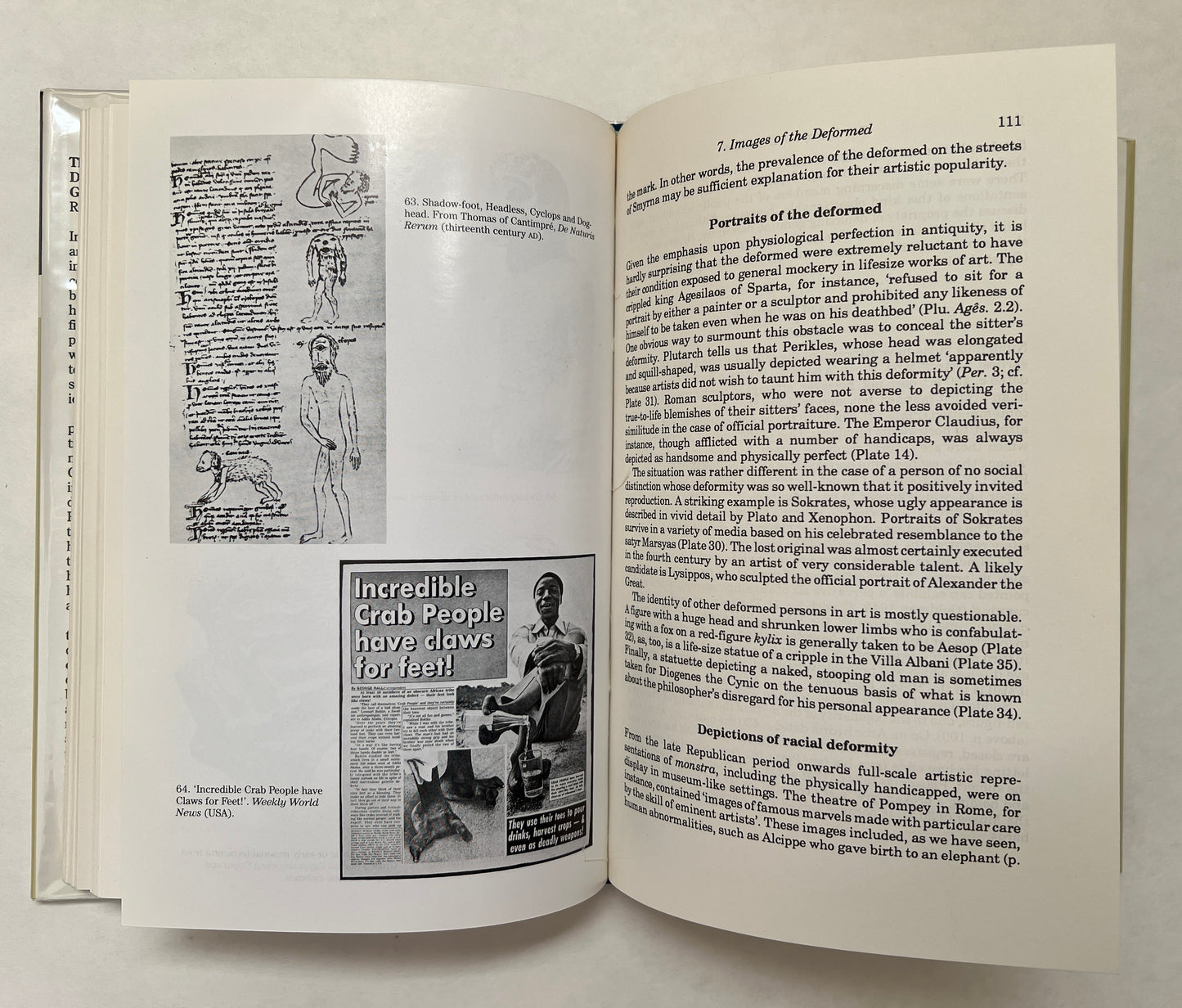Garland, Robert
The Eye of the Beholder: Deformity and Disability in the Graeco-Roman World
The Eye of the Beholder: Deformity and Disability in the Graeco-Roman World
受取状況を読み込めませんでした
Ithaca, N.Y: Cornell University Press, 1995. Quarto in black in pale green illus jacket; xviii, 222 pages: illustrations; 25 cm; bibliographical references (pages 203-216) and indexes. Personal owner circular blindstamp to front free endpaper; very mild sunning to jacket spine; else overall near fine in near fine jacket. Hardcover. ISBN: 0801431441; 9780801431449
Contents: 1. Survival of the Weakest -- 2. Half-Lives -- 3. The Roman Emperor in his Monstrous World -- 4. The Deformed and the Divine -- 5. Deriding the Disabled -- 6. The Physiognomic Consciousness -- 7. Images of the Deformed -- 8. Medical Diagnosis and Treatment -- 9. Towards a Teratology -- 10. Racial Deformity.
"In the eyes of the ancient Greeks and Romans, physical imperfections and infirmities were comparable to marks of the barbarian. The distinguished historian Robert Garland offers the first detailed investigation of the plight of those Greeks and Romans who, owing either to deformity or to disability, did not meet their society's exacting criteria for the ideal human form. Drawing on classical drama and poetry, historical works, medical tracts, vase painting and sculpture, mythology, and ethnography, Garland examines the high incidence of disability and deformity among the Greek and Roman population. From the deaf, the blind, and the lame to hunchbacks, dwarfs, and giants, to those even more severely disabled, he explores the lives of the handicapped and their place in ancient society. Garland discusses medical treatments, jobs available to the disabled, religious and scientific explanations for congenital deformities, and the prevalence of belief in monstrous races. And he analyzes how, through public rituals, social institutions, literature, and art, ancient society as a whole utilized deformity for its own purposes. The handicapped served as living testimony to the power of divine retribution, and were also regarded as scapegoats, portents, embodiments of evil, objects of amusement, and proof of nature's ingenuity. Referring frequently to the condition of the disabled in contemporary society, The Eye of the Beholder contributes an important chapter in the history of the treatment of the disabled and offers a revealing introduction to a relatively neglected aspect of ancient life."—Publisher
Abnormalities, Human -- Social aspects -- Rome. Attitude (Psychology) Social perception. People with disabilities -- Rome. Disabled Persons -- history Attitude Congenital Abnormalities -- history Greek World Roman World Social Perception Personnes handicapées -- Rome. Malformations -- Aspect social -- Rome. Personnes handicapées -- Italie -- Rome. Attitude (Psychologie) Perception sociale. Social perception. Attitude (Psychology) Abnormalities, Human -- Social aspects. People with disabilities. Behinderter Mensch Altertum Antike Körperbehinderung Sozialgeschichte Gehandicapten. Klassieke oudheid. People with disabilities -- Greece. People with disabilities -- Rome. Abnormalities, Human -- Social aspects -- Greece. Abnormalities, Human -- Social aspects -- Rome. Time: Geschichte Geographic: Italy -- Rome. Rome (Empire) Griechenland Römisches Reich Greece -- Social life and customs. Rome -- Social life and customs. Identifier: Abnormalities, Human; Social aspects; Rome; People with disabilities; Italy; Rome
共有
